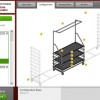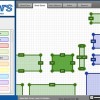 IT managers typically try to build a business case for their investments, often arguing that the dollars spent today will reduce cost over the long haul.
IT managers typically try to build a business case for their investments, often arguing that the dollars spent today will reduce cost over the long haul.
Indeed, IT systems can speed up cycle time and boost productivity, saving labor expenses along the way. But, ironically, an organization’s IT infrastructure can emerge as a large and rapidly expanding cost contributor. The issue can sneak up on companies as they accumulate new systems to accommodate business growth.
Most enterprises won’t have to look very hard to find opportunities to trim their IT outlays. The following six IT areas may be good places to start for your cost reduction strategies.
1. Server Consolidation
As a company makes the transition from small to mid-sized organization, it may end up acquiring a multitude of servers to keep up with expansion. The proliferation of application-specific servers results in low utilization rates — in some cases a server may use 10 percent or less of its processing power. A company that collects servers must absorb the upfront expense of acquiring and installing hardware, software licensing fees and the ongoing cost of updating and patching multiple systems. And then there’s the labor cost of overseeing the server farm. Virtualization is a cost reduction strategy that helps companies consolidate underutilized servers. This approach lets you run more applications and workloads on the same physical machine. The resulting consolidation cuts hardware, software and support costs.
2. Infrastructure-as-a-Service (IaaS)
Organizations may experience busy seasons — retailers during the holidays, for instance — that place extra demands on the IT infrastructure. A company may purchase additional computing capacity to have on hand for such surges. That capacity will remain unused for much of the year, but will nonetheless require support and upkeep. One workaround is to acquire on-demand computing resources in the cloud to cover peak usage periods. IaaS offerings from such providers as Amazon Web Services and Microsoft Azure provide a pay-as-you-go alternative. This cloud model lets enterprises avoid the cost of acquiring on-premise IT infrastructure that will remain idle much of the time.
IaaS, by the way, dovetails with server virtualization cost reduction strategies. There may be opportunities to migrate virtualized applications from physical servers to the cloud for additional cost savings.
3. Software-as-a-Service (SaaS)
Traditionally, when an enterprise needed to deploy a new application, it bought a server and installed the software — thereby contributing to runaway server growth. SaaS provides an alternative that hosts software in the cloud and eliminates the need to set up a new server platform in house. SaaS-based cost reduction strategies cut down on upfront hardware costs and also reduce support costs over time. That’s because the SaaS vendor is responsible for patching and updating the software, as opposed to the in-house IT team.
4. Power Consumption
Racks of underutilized servers drive up electrical power consumption and increase cooling costs. Server virtualization and cloud computing, as an added bonus, can help organizations realize significant savings through improved energy efficiency. The Uptime Institute estimates that decommissioning just one 1U rack server can yield $500 per year in energy savings. Multiply that savings across an entire data center with hundreds of servers and the savings add up quickly.
5. Storage Tiering
Organizations have more storage options than ever before: flash, disk, and cloud storage rank among the platforms now available. Hybrid solutions such as combined flash/disk storage arrays provide another option. Each type of storage offers a different price/performance profile. Flash, or solid-state disk (SSD), storage is more expensive, but offers higher speed. Disk may be slower, but provides cheaper capacity on a cost-per-gigabyte basis. Cloud storage, meanwhile. may contribute to disaster recovery or archival scenarios, but may not be suitable for frequently accessed production data. Against this backdrop, enterprises can create a tiered storage strategy that cuts IT costs. They can segment their data according to such factors as how often it is accessed and assign their various data sets to the most cost-effective storage tier.
6. Business Process Reengineering
Business process reengineering, when coupled with IT, can root out inefficiency and unnecessary cost. Reengineering streamlines a company’s operations and paves the way for effective IT implementation. Companies will generally benefit from incorporating reengineering into their cost reduction strategies.
Rethinking IT
Complex and outdated operations increase effort, elevate cost and shrink margins. At Lithyem, we leverage proven technologies such as cloud computing and time-tested practices such as business process reengineering to help customers build highly optimized and incredibly effective systems.
Are your IT costs in danger of spiraling out of control? Where do you see the greatest potential to save money? Leave your comments below.













